# 17

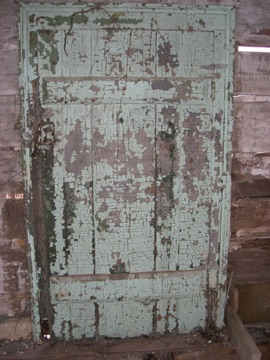
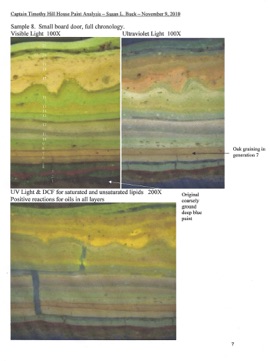
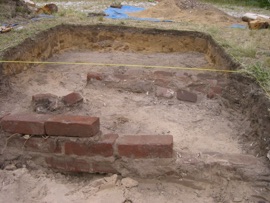
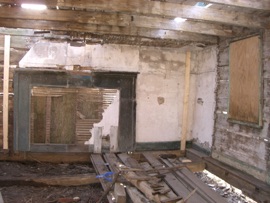
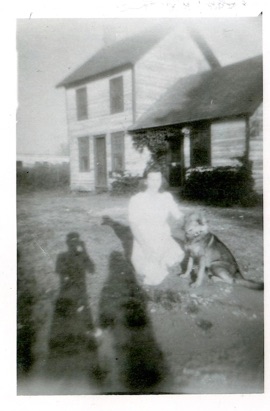
# 18
# 19
# 20
# 21
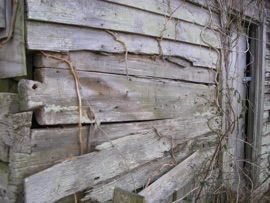

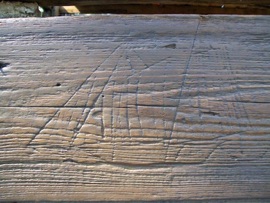
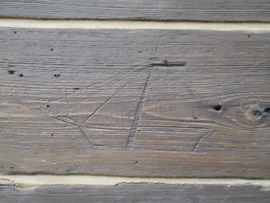
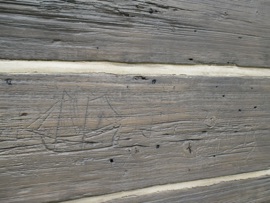

Architectural History...continued....
An interesting note from the history of Swansboro, North Carolina. (Photo 17 in Slideshow.) In 1783... “The town commissioners were to pass such rules ‘as to them shall seem meet for removing all nuisances within the bounds of the said town,...for pulling down all wooden chimneys built in the said town, and prevent the building thereof for the future, in order to prevent danger by fire.’ Six months notice was to be given the owners of wooden chimneys already built.” www.swansborohistory.blogspot.com
Another surprise was the amount of paint evidence that still existed. The interior portion of the early batten door has 21 generations of paint...a generation is a change of color not a coat....so there is perhaps 200 years of paint on the door. (Photos 18 & 19 in Slideshow.) Conservator Susan Buck, a colleague of Mr. Lounsbury, has done paint analysis and helped give some ideas of what might have happened when. The first color on the door is a Prussian Blue....a very popular color on the Eastern Shore in the 18th and early 19th Centuries. It is also the first color on the mantel surround and the stair door. So all of these features existed at a similar time. Now the early trim that defines the six over six windows on the east and west wall has a first color that is the third generation on the early batten door. So some years passed between the first decoration of the house and the addition of the larger windows and trim.
Over the years there were a few changes to the house. At some point relatively early in the 19th Century, the fireplace opening was enlarged for a brick chimney. (Photo 20 in Slideshow.) That was in turn followed by an interior brick flue for a wood or coal stove. For a good part of the 19th Century the interior walls had been whitewashed with lime paint but later, the walls were plastered. Also, about that time, weatherboard was installed over the exterior walls. (Photo 21 in Slideshow.) In 1903, a two story late 19th Century frame house was moved and added as an addition. It connected at the north wall and the log house became the kitchen area. The upstairs of the log house was used for storage. At some point, a false wall was put up running the length of the south wall and concealing the fireplace opening and mantel surround. (Photo 22 in Slideshow.) The last Hill family occupied the house from 1907 until 1959. With the interior plastered, the exterior weather boarded and this wall....the last man born in the house in 1930, Jack Hill, had no idea the house was made of logs or that a fireplace had ever existed.
What a surprise for the new owners when the old weatherboard was removed and there, right before their eyes, were some two dozen images of 19th Century sailing ships carved into the exterior logs! This house has always been a home to people who live by and work on the water. So, it should be no surprise that someone would carve these drawings into the log planks....a perfect canvas. They are simple but accurate and pleasing representations of vessels that would have been a daily sight on the waterways that surrounded Chincoteague. Who was the artist? The Captain or his son or his grandson....one can only suppose...but it is believed they were carved sometime before 1870. (Photos 23-27 in Slideshow.)
In 1838 there were 26 homes on Chincoteague Island and The Captain Timothy Hill House is last known survivor of these homes. This house has waited a long time to tell its story. It took many experienced eyes to translate the large amount of original material that remains. A great number of individuals and organizations were involved in uncovering the history of the house and it’s architecture and restoring the building. It is still a work in progress. The owners are continuing this work and have hopes of recreating a wooden chimney. Stay tuned....
*Visit the RESTORATION page and see the restoration process that began in Jan. 2010.
# 22
# 23
# 24
# 25
# 26
# 27
# 28
